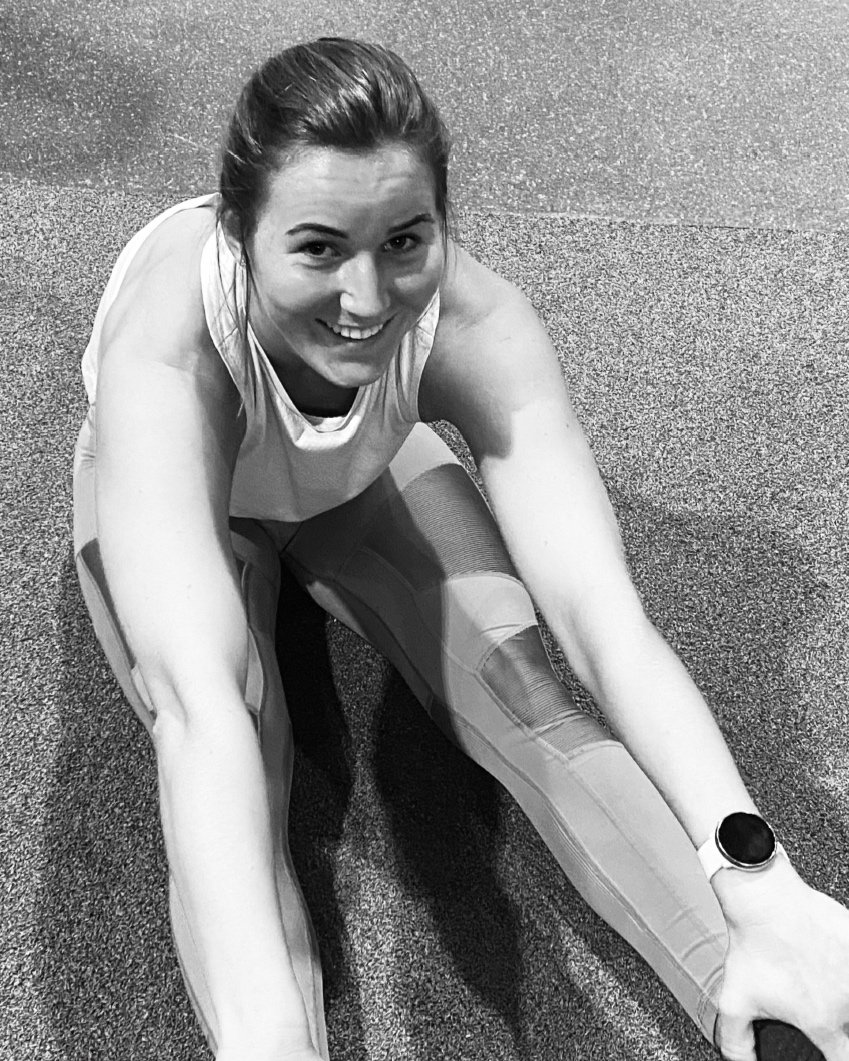Performance Preparation - R.A.M.P
Performance Preparation: Why do we warm-up?
Time is valuable in the gym! The truth is…. you don’t need to spend 40 min foam rolling, stretching, trigger pointing and doing specific glute activation drill. A dynamic and comprehensive warm up can be complete in under 5 minute. It’s more valuable to use your time effective and optimally to train.
The aim of the warm-up is to prepare both mentally and physically for exercise or competition.21 Without the development of undue fatigue.
An important starting point in examining the optimal protocol of a warm up is to examine the rationale behind why we warm-up. A well designed warm-up can:
Increase muscle temperature
Core temperature, blood flow26, and
Disrupt transient connective tissue bonds.13
These effects can have the following positive effects on performance:
Faster muscle contraction and relaxation of both agonist and antagonist muscles.21
Improvements in rate of force development and reaction time.1
Improvements in muscle strength and power.5,13
Lowered viscous resistance in muscles.13
Improved oxygen delivery due to the Bohr effect where higher temperatures facilitate oxygen release from haemoglobin and myoglobin.26
Increased blood flow to active muscles.26
Enhanced metabolic reactions.13
Additionally, a common reason given by coaches for a warm-up is a reduction in the risk of injury. Whilst the influence of a warm-up on injury prevention is unclear, the evidence suggests a positive effect.17,34
A well designed warm-up can clearly have a positive effect on subsequent performance and a useful way of looking at warm-up is as “performance preparation”, enabling an athlete to perform maximally in their workout/competition. With this performance preparation approach, the methods used in warm-up can be selected and evaluated to provide optimal effect on performance.
There is little, if any, evidence that stretching pre or post participation prevents injury.20,29,33,34,37 Similarly, in terms of the performance enhancement elements, research suggests that rather than enhance subsequent performance, static stretching can compromise muscle performance.23 In terms of performance decrements after static
Static Stretching
Research has indicated potential decrements in force production,3,9,10,11,14,30 power performance,8,40,43 running speed,16 reaction time,4 and strength endurance.28 PNF7 (Proprioceptive Neuromuscular Facilitation) and ballistic stretching27 have also been shown to have detrimental effects of performance. While some studies have found that static stretching has no effect on subsequent performance,25,38,41. There is sufficient evidence to question the use of static stretching in warm-up, and the justification to look at other methods which do not have the potential to reduce performance, and which may offer more functional methods of enhancing performance.
Static Stretching with professional Jockey Joanna Balcerska
Dynamic stretching
Dynamic stretching on the other hand does not seem to cause the performance reduction effects of static and PNF stretching16 and has been shown to improve subsequent running performance.16,25,41 Additionally, the dynamic nature of dynamic stretching is more functional than static stretching given the need for active and dynamic methods to be used in functional warm-ups.19 Effective dynamic stretches also require that the muscle is activated through the range of movement, which contributes to the neural activation requirements of effective warm-ups.
“R.A.M.P” Protocol
This provide a framework by which warm-up activities can be classified and constructed. This system identifies three key phases of effective warm-ups.
1. Raise
2. Activate and Mobilise
3. Potentiate
Raise
This phase has the aim of elevating body temperature, heart rate, respiration rate, blood flow and joint fluid viscosity via low intensity activities.
This can take the form of fast walking, skipping, light sled pull/push, jogging etc
Activate and mobilize
This phase has two key aims
1. To activate key muscle groups.
2. To mobilise key joints and ranges of motion used in the sport
The approach is to work on movements, rather than focus on individual muscles. This has a number of key advantages:
The dynamic nature contributes to maintaining the elevation effects of the first period.
The movements are more specific to those found in the sport, and
It is extremely time efficient.
Additionally, it has a physiologically different approach. Whilst static stretching involves a relaxation of the muscle, the activation and mobilisation approach involves actively working a muscle through its range of motion, which has the effect of activating all of the key muscles involved both directly in the movements and also in the stabilisation of the body through the movements. In this way preparation for activity is enhanced, as muscles are activated,
Potentiation Phase
The term ‘potentiation’ refers to activities that improve effectiveness, and in the case of the warm-up involves the selection of activities that will improve the effectiveness of subsequent performance.
The potentiation phase of the warm-up can have two aims.
1. To increase the intensity of exercise to a point at which athletes are able to perform their training/match activities at their maximal levels.
2. Select activities that may contribute to a super-maximal effect, where the activities chosen contribute to an enhanced performance effect, via the utilisation of the post-activation potentiation (PAP) effect.
The “R.A.M.P” approach provides a framework around which to construct effective warm-up procedures for both competition and the workout. The aim of the warm-up must always be kept in mind, that is to ensure optimal preparation for performance, and activities should be selected that provide for raising, activation, mobilisation and potentiation, but without the development of undue fatigue.
References
1. Asmussen E, Bonde-Peterson F and Jorgenson K. Mechanoelastic properties of human muscles at different temperatures. Acta Physiologica Scandinavica. 96:86–93 1976.
2. Baechle, T.R and Earle, R.W. Essentials of Strength Training and Conditioning (Second Edition). Champaign Ill: Human Kinetics 2000.
3. Behm DG, Button DC, Butt JC.Factors affecting force loss with prolonged stretching.Can J Appl Physiol. Jun;26(3):261–72 2001.
4. Behm DG, Bambury A, Cahill F, Power K. Effect of acute static stretching on force, balance, reaction time, and movement time. Med Sci Sports Exerc. Aug; 36(8):1397–402 2004.
5. Bergh U and Ekblom B Influence of muscle temperature on maximal strength and power output in human muscle.
Acta Physiologica Scandinavica 107:332–337 1979.
6. Burkett LN, Phillips WT, Ziuraitis J. The best warm-up for the vertical jump in college-age athletic men. J Strength Cond Res. Aug;19(3):673–6 2005.
7. Church JB, Wiggins MS, Moode FM, Crist R. Effect of warm-up and flexibility treatments on vertical jump performance.J Strength Cond Res. Aug;15(3):332–6 2001.
8. Cornwell A, Nelson AG, Sidaway B. Acute effects of stretching on the neuromechanical properties of the triceps surae muscle complex. Eur J Appl Physiol. 2002 Mar;86(5):428–34 2002.
9. Cramer JT, Housh TJ, Johnson GO, Miller JM, Coburn JW, Beck TW. Acute effects of static stretching on peak torque in women. J Strength Cond Res. May;18(2):236–41 2004
10. Cramer JT, Housh TJ, Weir JP, Johnson GO, Coburn JW, Beck TW. The acute effects of static stretching on peak torque, mean power output, electromyography, and mechanomyography. Eur J Appl Physiol. Mar;93(5- 6):530–9 2005.
11. Cramer JT, Housh TJ, Coburn JW, Beck TW, Johnson GO.Acute effects of static stretching on maximal eccentric torque production in women. J Strength Cond Res. May;20(2):354–8 2006.
12. deVries, H.A. Physiology of Exercise for Physical Education and Athletics. Dubuque, IA: Brown 1974.
13. Enoka, RM. Neuromechanics of Human Movement. Champaign Ill: Human Kinetics 2002.
14. Evetovich TK, Nauman NJ, Conley DS, Todd JB. Effect of static stretching of the biceps brachii on torque, electromyography, and mechanomyography during concentric isokinetic muscle actions. J Strength Cond Res. Aug;17(3):484–8 2003.
15. Faigenbaum AD, Bellucci M, Bernieri A, Bakker B, Hoorens K. Acute effects of different warm-up protocols on fitness performance in children. J Strength Cond Res. May;19(2):376–81 2005.
16. Fletcher IM, Jones B. The effect of different warm-up stretch protocols on 20 meter sprint performance in trained rugby union players. J Strength Cond Res. Nov;18(4):885–8 2004.
17. Fradkin AJ, Gabbe BJ, Cameron PA. Does warming up prevent injury in sport? The evidence from randomised controlled trials? J Sci Med Sport. Jun;9(3):214–20 2006.
18. Gandevia, S.C. Mind muscles and motoneurones. Journal of Science and Medicine in Sport. 2(3), 167–180 1999.
19. Gambetta, V, Athletic Development – The Art and Science of Functional Sports Conditioning. Champaign Ill: Human Kinetics 2007.
20. Herbert RD and Gabriel M. Effects of stretching before and after exercise on muscle soreness and risk of injury: a systematic review. Br Med J: 325: 468–470 2002.
21. Hoffman J Physiological Aspects of Sports Performance and Training. Champaign Ill: Human Kinetics 2002
22. Holcomb, W.R Stretching and Warm Up. In Baechle and Earle 2000.
23. Knudson DV, Magnusson P and McHugh M. Current issues in flexibility fitness. Pres Council Phys fitness Sports 3:1–6 2000.
24. Komi, P.V. Strength and Power in Sports : Cambridge MA: Blackwell 1992.
25. Little T, Williams AG. Effects of differential stretching protocols during warm-ups on high-speed motor capacities in professional soccer players. .J Strength Cond Res. Feb;20(1):203–7 2006.
26. McArdle WD, Katch Fi and Katch VL. Exercise Physiology: Energy, Nutrition and Human Performance (Fifth Ed) Baltimore: Lippincott Williams ansd Wilkins 2001.
27. Nelson AG, Kokkonen J. Acute muscle stretching inhibits maximal strength performance. Res Q Exerc Sport. Dec; 72(4): 415–419 2001.
28. Nelson AG, Kokkonen J, Arnall DA. Acute muscle stretching inhibits muscle strength endurance performance.
J Strength Cond Res. May;19(2):338–43 2005.
29. Pope RP, Herbert RD, Kirwan JD et al. A randomised trial of pre-exercise stretching for prevention of lower limb injury. Med Sci Sports Exerc. 32: 271–277 2000.
30. Power K, Behm D, Cahill F, Carroll M, Young W. An acute bout of static stretching: effects on force and jumping performance.Med Sci Sports Exerc. Aug;36(8):1389–96 2004.
31. Sale, D.G. (1992), Neural adaptations to strength training. In Komi P.(1992) pp249–265.
32. Sale, D.G Postactivation potentiation: Role in human performance. Exercise and Sport Science Reviews 30(3). 138–143 2002.
33. Shrier I. Stretching before exercise does not reduce the risk of local muscle injury: a critical review of the clinical and basic science literature. Clin J Sport Med. Oct;9(4):221–7 1999.
34. Shrier I. Stretching before exercise: an evidence based approach. Br J Sports Med. Oct;34(5):324–5 2000.
35. Shrier I. Does stretching improve performance? A systematic and critical review of the literature. Clin J Sport Med. Sep;14(5):267–73 Review 2004.
36. Shrier I Meta-analysis on pre-exercise stretching. Med Sci Sports Exerc. Oct;36(10):1832 2004.
37. Thacker SB, Gilchrist J, Stroup DF, Kimsey CD Jr.The impact of stretching on sports injury risk: a systematic review of the literature. Med Sci Sports Exerc. Mar;36(3):371–8 2004.
38. Unick J, Kieffer HS, Cheesman W, Feeney A. The acute effects of static and ballistic stretching on vertical jump performance in trained women. J Strength Cond Res. Feb;19(1):206–12 2005.
39. Verstegen, M and Williams P. Core performance. Rodahl: New York 2004.
40. Wallmann HW, Mercer JA, McWhorter JW. Surface electromyographic assessment of the effect of static stretching of the gastrocnemius on vertical jump performance. J Strength Cond Res. Aug;19(3):684–8 2005.
41. Yamaguchi T, Ishii K. Effects of static stretching for 30 seconds and dynamic stretching on leg extension power. J Strength Cond Res. Aug;19(3):677–83 2005.
42. Young WB, Behm DG. Should static stretching be used during a warm up for strength and power activities. Strength and Conditioning Journal. 24(6):33-37 2002.
43. Young WB, Behm DG. Effects of running, static stretching and practice jumps on explosive force production and jumping performance. J Sports Med Phys Fitness. Mar;43(1):21-7 2003.


